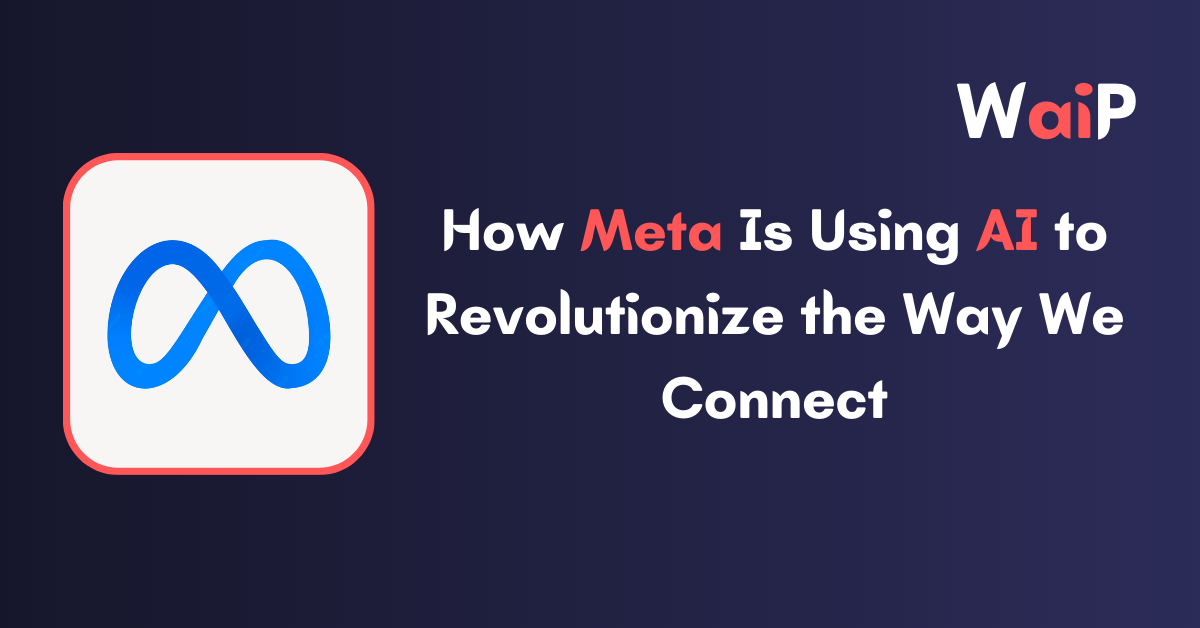The digital universe is buzzing with chatter about the evolution of Facebook into Meta.
This transformation signifies a deeper commitment to creating a more connected, immersive experience, predominantly powered by artificial intelligence (AI).
But how exactly does Meta leverage AI in its products? This article will take you on a comprehensive exploration of how AI works behind the scenes, enhancing your digital experience, ensuring safety, and promoting innovation at Meta.
AI in Recommendations and Personalization
Meta’s use of AI creates a unique, personalized user experience. One way Artificial Intelligence does this is through its recommendation algorithms.
By assessing a variety of factors such as user interests, engagement with previous content, and social connections, Meta’s News Feed algorithm uses AI to suggest relevant content to users.
The company’s feature, “On This Day,” also uses AI to stir nostalgia among users. Using facial recognition technology, the feature identifies people in past photos, reminding users of past memories likely to be of interest.
Thus, the company’s AI-powered personalization effectively enhances user engagement by tailoring the user experience to individual tastes and preferences.
AI in Safety Measures
Ensuring user safety is a paramount concern for Meta. For this reason, the company employs AI to detect and remove harmful content, such as hate speech and inappropriate imagery.

Meta’s AI also comes in handy in preventing fraudulent activities like the creation of fake accounts and phishing scams.
This technology can scan billions of pieces of content daily, removing any content violating Meta’s policies. Thus, Meta’s AI-powered safety measures are robust and instrumental in keeping users safe.
AI in Translation and Productivity
In a global community like Meta, language should not be a barrier to communication. This is where Meta’s AI-powered translation tools come in.
Whether it’s text, photos, or videos, AI helps users communicate effortlessly, irrespective of their spoken language.
Another key area where Meta uses AI is to enhance user productivity. The “Smart Reply” feature is a prime example where AI is used to suggest responses to messages.
Meta also uses AI in its “Notes” app to aid users in organizing their thoughts. Thus, Meta’s AI-powered tools are aimed at making user interactions smoother and more productive.
AI in Augmented Reality and the Metaverse
Meta is pushing the boundaries of AI application in its newly developed augmented reality (AR) glasses, named Project Nazare. These glasses use AI to understand the user’s surroundings and offer relevant information, enhancing the user’s interaction with the real world.
In the realm of the metaverse, Meta is pioneering the use of AI-powered avatars. These avatars aim to enable more natural expression and interaction in virtual spaces, opening up new avenues for creativity and connectivity. This represents the future of AI’s role in Meta’s commitment to building comprehensive, immersive experiences.
AI in Creativity
On the creativity front, Meta is exploring ways to empower users to create more compelling content. The company is developing a new AI-powered tool that will let users create realistic 3D avatars. This tool could revolutionize content creation by making it easy for people to represent themselves in virtual worlds.
Conclusion
The digital world is rapidly evolving, and AI is at the heart of this transformation. From personalizing user experience to ensuring safety, boosting productivity, enabling seamless communication, and fostering creativity, AI’s role in Meta’s products is both extensive and profound.
As Meta continues to invest heavily in AI, the technology will unlock more innovative uses, making user experiences more immersive, engaging, and safe.
The future of AI in Meta’s products promises to be exciting and groundbreaking, further revolutionizing the way we connect, communicate, and create in the digital world. Stay tuned to see how AI continues to shape the future of Meta and its burgeoning metaverse.

![Best Mobile Games Your Should Try in 2024 [Trending Now] 2 Best Mobile Games](https://wideaiprompts.com/wp-content/uploads/2024/03/Best-Mobile-Games-330x220.webp)



![Best Mobile Games Your Should Try in 2024 [Trending Now] 10 Best Mobile Games](https://wideaiprompts.com/wp-content/uploads/2024/03/Best-Mobile-Games-150x150.webp)


